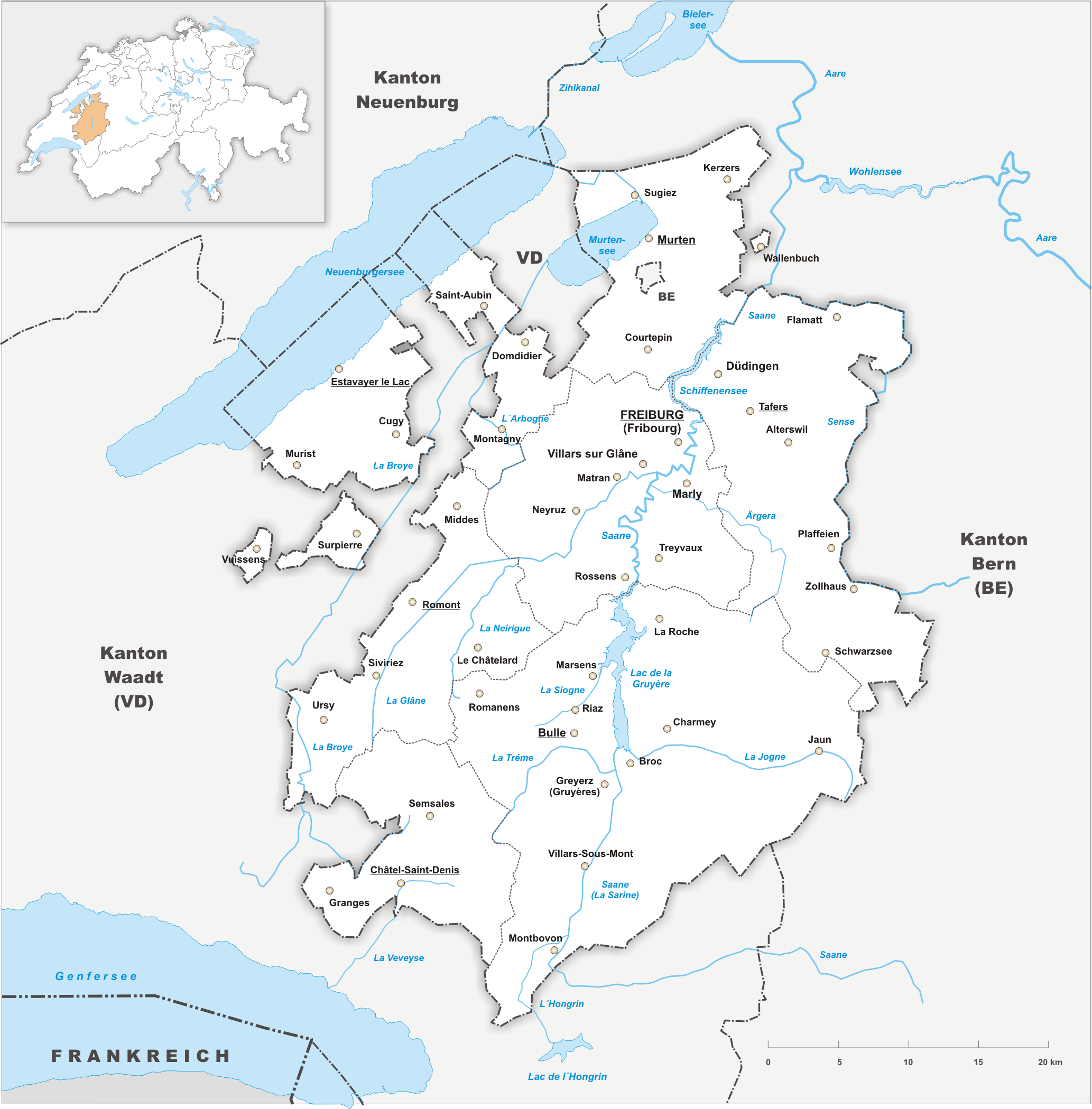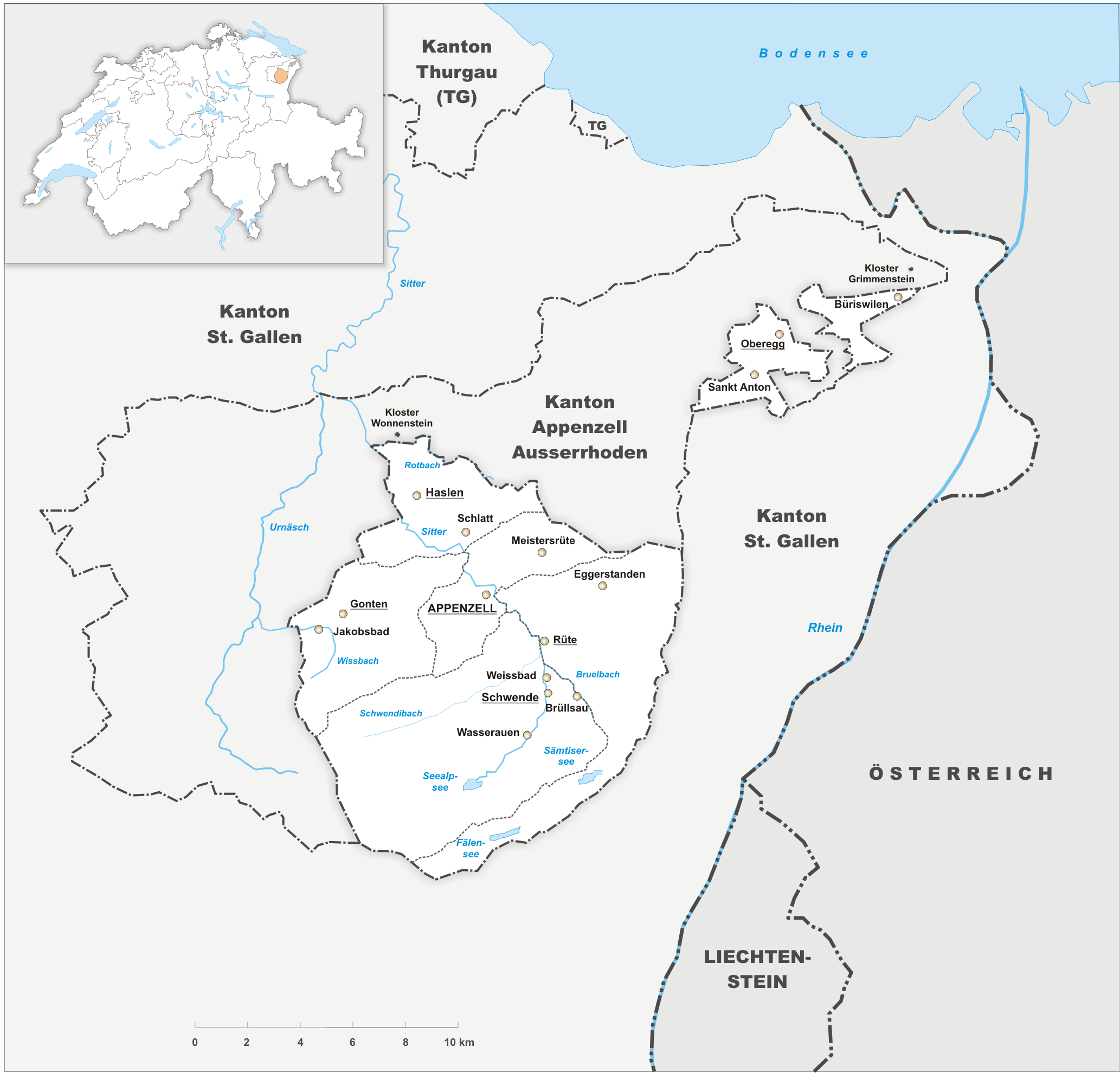|
List Of Prisons In Switzerland
Prisons in Switzerland are operated by the Swiss cantons, which are responsible for law enforcement in Switzerland. As of 2008, Switzerland has 124 prisons according to the Catalogue of Correctional Institutions (''Katalog der Einrichtungen des Freiheitsentzuges'') compiled by the Federal Statistical Office; other statistics, which account for various institutions being administratively associated with each other, report 117 prisons. Swiss prisons have a capacity of up to 6,736 detainees total (amounting to 89 detention places per 100,000 inhabitants), including up to 477 women and 105 minors. The detainees are housed in 4,531 single cells, 1,044 cells for multiple persons, 172 security cells, 200 disciplinary cells and 50 infirmary cells. In 2008, Swiss prisons housed 5,780 detainees (77 detainees per 100,000 inhabitants), of which 5.8% were female, 1.2% minors and 69.7% non-Swiss nationals. Half of all detainees were serving prison sentences, a quarter were in pre-trial detention ... [...More Info...] [...Related Items...] OR: [Wikipedia] [Google] [Baidu] |
Cantons Of Switzerland
The 26 cantons of Switzerland (german: Kanton; french: canton ; it, cantone; Sursilvan and Surmiran: ; Vallader and Puter: ; Sutsilvan: ; Rumantsch Grischun: ) are the member states of the Swiss Confederation. The nucleus of the Swiss Confederacy in the form of the first three confederate allies used to be referred to as the . Two important periods in the development of the Old Swiss Confederacy are summarized by the terms ('Eight Cantons'; from 1353–1481) and ('Thirteen Cantons', from 1513–1798).rendered "the 'confederacy of eight'" and "the 'Thirteen-Canton Confederation'", respectively, in: Each canton of the Old Swiss Confederacy, formerly also ('lieu/locality', from before 1450), or ('estate', from ), was a fully sovereign state with its own border controls, army, and currency from at least the Treaty of Westphalia (1648) until the establishment of the Swiss federal state in 1848, with a brief period of centralised government during the Helvetic Republic ( ... [...More Info...] [...Related Items...] OR: [Wikipedia] [Google] [Baidu] |
Canton Of Zug
The canton of Zug, also Zoug (Standard German: , Alemannic German: , rm, Chantun Zug, french: Canton de Zoug, it, Canton Zugo) is one of the 26 cantons of Switzerland. It is located in central Switzerland and its capital is Zug. At the canton is one of the smallest of the Swiss cantons in terms of area. It is not subdivided into districts, but eleven municipalities. History The first trace of a settlement in the canton dates from approximately 14,000 BC, with additional finds from the Paleolithic (12,400-9250 BC) and the Mesolithic (9250-5500 BC). During the Neolithic (5500-2200 BC) and the Bronze Age (2200-850 BC) about 50 different stilt house villages were built in 33 locations around Lake Zug. Some of these sites are part of the UNESCO World Heritage Site Prehistoric pile dwellings around the Alps. Prehistoric sites around the lake and throughout the canton include examples from the Neolithic Egolzwiler, Cortaillod, Pfyn and Horgen cultures. Traces of the later Neolith ... [...More Info...] [...Related Items...] OR: [Wikipedia] [Google] [Baidu] |
Canton Of Fribourg
The canton of Fribourg, also canton of Freiburg (french: Canton de Fribourg ; german: Kanton Freiburg ; frp, Canton de Fribôrg rm, Chantun Friburg it, Canton Friburgo) is located in western Switzerland. The canton is bilingual, with French spoken by more than two thirds of the citizens and German by a little more than a quarter. Both are official languages in the canton. The canton takes its name from its capital city of Fribourg. History On the shores of Lake Neuchâtel and Lake Morat significant traces of prehistoric settlements have been unearthed. The canton of Fribourg joined the Swiss Confederation in 1481. The area is made up of lands acquired by the capital Fribourg. The present extent was reached in 1803 when Murten (Morat) was acquired. The canton of Fribourg joined the separatist league of Catholic cantons in 1846 (Sonderbund). The following year, its troops surrendered to the federal army. Geography The canton is bounded to the west by Lake Neuchâtel, to the ... [...More Info...] [...Related Items...] OR: [Wikipedia] [Google] [Baidu] |
Canton Of Zürich
The canton of Zürich (german: Kanton Zürich ; rm, Chantun Turitg; french: Canton de Zurich; it, Canton Zurigo) is a Swiss canton in the northeastern part of the country. With a population of (as of ), it is the most populous canton in the country. Zürich is the ''de facto'' capital of the canton, but is not specifically mentioned in the constitution. The official language is German. The local Swiss German dialect, called '' Züritüütsch'', is commonly spoken. History Early history The prehistoric pile dwellings around Zürichsee comprise 11 of total 56 prehistoric pile dwellings around the Alps in Switzerland, that are located around Lake Zürich in the cantons of Schwyz, St. Gallen and Zürich. Located on the shore of Lake Zürich, there are Freienbach–Hurden Rosshorn, Freienbach–Hurden Seefeld, Rapperswil-Jona/Hombrechtikon–Feldbach, Rapperswil-Jona–Technikum, Erlenbach–Winkel, Meilen–Rorenhaab, Wädenswil–Vorder Au, Zürich–Enge Alpenquai, Gross ... [...More Info...] [...Related Items...] OR: [Wikipedia] [Google] [Baidu] |
Thurgau
Thurgau (; french: Thurgovie; it, Turgovia), anglicized as Thurgovia, more formally the Canton of Thurgau, is one of the 26 cantons forming the Swiss Confederation. It is composed of five districts and its capital is Frauenfeld. Thurgau is part of Eastern Switzerland. It is named for the river Thur, and the name ''Thurgovia'' was historically used for a larger area, including part of this river's basin upstream of the modern canton. The area of what is now Thurgau was acquired as subject territories by the cantons of the Old Swiss Confederacy from the mid 15th century. Thurgau was first declared a canton in its own right at the formation of the Helvetic Republic in 1798. The population, , is . In 2007, there were a total of 47,390 (or 19.9% of the population) who were resident foreigners. History In prehistoric times the lands of the canton were inhabited by people of the Pfyn culture along Lake Constance. During Roman times the canton was part of the province ''Raetia'' unt ... [...More Info...] [...Related Items...] OR: [Wikipedia] [Google] [Baidu] |
Canton Of St
Canton may refer to: Administrative division terminology * Canton (administrative division), territorial/administrative division in some countries, notably Switzerland * Township (Canada), known as ''canton'' in Canadian French Arts and entertainment * Canton (band), an Italian synth pop group * "Canton" (song) by Japan * Canton, a fictional town in " Jaynestown", an episode of ''Firefly'' Design * Canton (building), a corner pilaster * Canton (flag), an emblem placed in the top left quarter of a flag * Canton (heraldry), a square or other charge (symbol) occupying the upper left corner of a coat of arms * Canton porcelain, Chinese ceramic ware People * Canton (surname), and list of people with the surname * Canton Jones, American Christian music/hip-hop artist Places Canada * Canton, New Brunswick, a community in Drummond Parish, New Brunswick * Canton, Ontario China * Guangdong (Canton Province), province in southern China * Guangzhou (Canton City), capita ... [...More Info...] [...Related Items...] OR: [Wikipedia] [Google] [Baidu] |
Schaffhausen
Schaffhausen (; gsw, Schafuuse; french: Schaffhouse; it, Sciaffusa; rm, Schaffusa; en, Shaffhouse) is a list of towns in Switzerland, town with historic roots, a municipalities of Switzerland, municipality in northern Switzerland, and the capital of the canton of Schaffhausen, canton of the same name; it has an estimated population of 36,000 It is located right next to the shore of the High Rhine; it is one of four Swiss towns located on the northern side of the Rhine, along with , the historic , and . The old town has many fine Renaissance era buildings decorated with exterior frescos and sculpture, as well as the old canton fortress, the ''Munot''. Schaffhausen is also a railway junction of Swiss and German rail networks. One of the lines connects the town with the nearby Rhine Falls in , Europe's largest waterfall, a tourist attraction. The official language of Schaffhausen is (the Swiss variety of Standard) Swiss Standard German, German, but the main spoken language ... [...More Info...] [...Related Items...] OR: [Wikipedia] [Google] [Baidu] |
Glarus
, neighboring_municipalities= Glarus Nord, Glarus Süd, Muotathal (SZ), Innerthal (SZ) , twintowns= Wiesbaden-Biebrich (Germany) } Glarus (; gsw, Glaris; french: Glaris; it, Glarona; rm, Glaruna) is the capital of the canton of Glarus in Switzerland. Since 1 January 2011, the municipality Glarus incorporates the former municipalities of Ennenda, Netstal and Riedern.Amtliches Gemeindeverzeichnis der Schweiz published by the Swiss Federal Statistical Office accessed 18 February 2011 Glarus lies on the river Linth between the foot of the Glärnisch (part of the Schwyzer Alps) to the west and the Schilt (Glarus Alps) to the east. Very few buildings built before the fire of 1861 remain. Wood, textile, and plastics, as well as printing, are the dominant indu ... [...More Info...] [...Related Items...] OR: [Wikipedia] [Google] [Baidu] |
Appenzell Ausserrhoden
Appenzell Ausserrhoden (; in English sometimes Appenzell Outer Rhodes) (german: Kanton Appenzell Ausserrhoden; rm, Chantun Appenzell Dadora; french: Canton d'Appenzell Rhodes-Extérieures; it, Canton Appenzello Esterno) is one of the 26 cantons forming the Swiss Confederation. It is composed of twenty municipalities. The seat of the government and parliament is Herisau, and the seat of judicial authorities are in Trogen. It is traditionally considered a " half-canton", the other half being Appenzell Innerrhoden. Appenzell Ausserrhoden is located in the north east of Switzerland. Together with the canton of Appenzell Innerrhoden, it forms an enclave within the canton of St. Gallen. The canton is essentially located in the Alpine foothills of the Alpstein massif, culminating at the Säntis. Appenzell Ausserrhoden was part of the historical canton of Appenzell, which was divided into Appenzell Innerrhoden (Catholic) and Appenzell Ausserrhoden (Protestant) in 1597 as a result of ... [...More Info...] [...Related Items...] OR: [Wikipedia] [Google] [Baidu] |
Appenzell Innerrhoden
Appenzell Innerrhoden (; in English sometimes Appenzell Inner-Rhodes) (german: Kanton Appenzell Innerrhoden rm, Chantun Appenzell Dadens; french: Canton d'Appenzell Rhodes-Intérieures; it, Canton Appenzello Interno) is one of the 26 cantons forming the Swiss Confederation. It is composed of six districts. The seat of the government and parliament is Appenzell. It is traditionally considered a " half-canton", the other half being Appenzell Ausserrhoden. Appenzell Innerrhoden is the smallest canton of Switzerland by population and the second smallest by area. It is located in the north east of the country. Together with the canton of Appenzell Ausserrhoden, it forms an enclave within the canton of St. Gallen. The canton is essentially located in the Alpine foothills of the Alpstein massif, culminating at the Säntis. Appenzell Innerrhoden was part of the historical canton of Appenzell, which was divided into Appenzell Ausserrhoden (Protestant) and Appenzell Innerrhoden (Ca ... [...More Info...] [...Related Items...] OR: [Wikipedia] [Google] [Baidu] |
Aargau
Aargau, more formally the Canton of Aargau (german: Kanton Aargau; rm, Chantun Argovia; french: Canton d'Argovie; it, Canton Argovia), is one of the 26 cantons forming the Swiss Confederation. It is composed of eleven districts and its capital is Aarau. Aargau is one of the most northerly cantons of Switzerland. It is situated by the lower course of the Aare River, which is why the canton is called ''Aar- gau'' (meaning "Aare province"). It is one of the most densely populated regions of Switzerland. History Early history The area of Aargau and the surrounding areas were controlled by the Helvetians, a member of the Celts, as far back as 200 BC. It was eventually occupied by the Romans and then by the 6th century, the Franks. The Romans built a major settlement called Vindonissa, near the present location of Brugg. Medieval Aargau The reconstructed Old High German name of Aargau is ''Argowe'', first unambiguously attested (in the spelling ''Argue'') in 795. The term ... [...More Info...] [...Related Items...] OR: [Wikipedia] [Google] [Baidu] |









